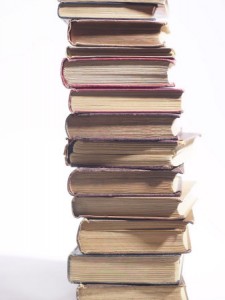 The human body has five, equally important senses of perception- touch, smell, taste, hearing and vision. When reading a piece of fiction or poem in the traditional manner, one needed only two of these senses: seeing and touching. You held the book or paper in your hand and used your eyes to visualize the words. However, with technology and the Internet, there is an opportunity to employ additional senses to absorb and appreciate literature. As an online publication, Shenandoah is entrenched in this new, evolving digital world. Poets can now record their poems, giving readers the choice to listen to their work. Though this is not available for the fiction and non-fiction genres, the act of reading stories online gives the reader an entirely diverse experience. Scanning through a webpage requires slightly more effort and concentration, and it is tempting to scroll through less interesting passages in order to reach the climax or ending. As well, you cannot highlight or make notes in the margins, which limits the interaction with the author’s words and intended message.
The human body has five, equally important senses of perception- touch, smell, taste, hearing and vision. When reading a piece of fiction or poem in the traditional manner, one needed only two of these senses: seeing and touching. You held the book or paper in your hand and used your eyes to visualize the words. However, with technology and the Internet, there is an opportunity to employ additional senses to absorb and appreciate literature. As an online publication, Shenandoah is entrenched in this new, evolving digital world. Poets can now record their poems, giving readers the choice to listen to their work. Though this is not available for the fiction and non-fiction genres, the act of reading stories online gives the reader an entirely diverse experience. Scanning through a webpage requires slightly more effort and concentration, and it is tempting to scroll through less interesting passages in order to reach the climax or ending. As well, you cannot highlight or make notes in the margins, which limits the interaction with the author’s words and intended message.
 This begins a debate, one that I have thought about a lot recently as I listened to books on tape during long, monotonous road trips. How is the art of listening to a creative piece different from tangibly, physically holding and reading it? Arguably, you are using the same amount of senses since eyesight is traded for ears and their ability to hear. Auditory “reading” allows you to multitask, as books become even more transportable. With this benefit comes the drawback of unconcentrated attention and the potential for daydreaming and images of to-do lists. Though I admire the convenience factor of downloadable books, I will not trade my beloved paperbacks for an e-reader in the near future, nor do I envision transitioning to a solely auditory consumption of literature. After going back to one of the books I listened to earlier this summer, I discovered the act of reading gave me the ability to examine the author’s syntax and to appreciate word choice to a greater extent as sentences can be read again and chapters pored over with an alert eye. Though Shenandoah is online and the act of possessing, touching and reading an actual journal is not feasible, the other possibilities associated with a literary journal have subsequently expanded. Images can be incorporated into the stories, either as supplemental information or simply as a thematic or decorative addition to the webpage. Videos are increasingly popular as supplementary elements to literature since poems can be presented in song form or simply recited in a more visually appealing way. Essentially, the simple experience has become multidimensional. Although I don’t foresee literary journals, particularly Shenandoah, being replaced by videos or audio recordings of poems or fictions, I do think it is important to be cognizant of how technology enhances, or detracts from, the way we interact with literature and creative works.
This begins a debate, one that I have thought about a lot recently as I listened to books on tape during long, monotonous road trips. How is the art of listening to a creative piece different from tangibly, physically holding and reading it? Arguably, you are using the same amount of senses since eyesight is traded for ears and their ability to hear. Auditory “reading” allows you to multitask, as books become even more transportable. With this benefit comes the drawback of unconcentrated attention and the potential for daydreaming and images of to-do lists. Though I admire the convenience factor of downloadable books, I will not trade my beloved paperbacks for an e-reader in the near future, nor do I envision transitioning to a solely auditory consumption of literature. After going back to one of the books I listened to earlier this summer, I discovered the act of reading gave me the ability to examine the author’s syntax and to appreciate word choice to a greater extent as sentences can be read again and chapters pored over with an alert eye. Though Shenandoah is online and the act of possessing, touching and reading an actual journal is not feasible, the other possibilities associated with a literary journal have subsequently expanded. Images can be incorporated into the stories, either as supplemental information or simply as a thematic or decorative addition to the webpage. Videos are increasingly popular as supplementary elements to literature since poems can be presented in song form or simply recited in a more visually appealing way. Essentially, the simple experience has become multidimensional. Although I don’t foresee literary journals, particularly Shenandoah, being replaced by videos or audio recordings of poems or fictions, I do think it is important to be cognizant of how technology enhances, or detracts from, the way we interact with literature and creative works.
